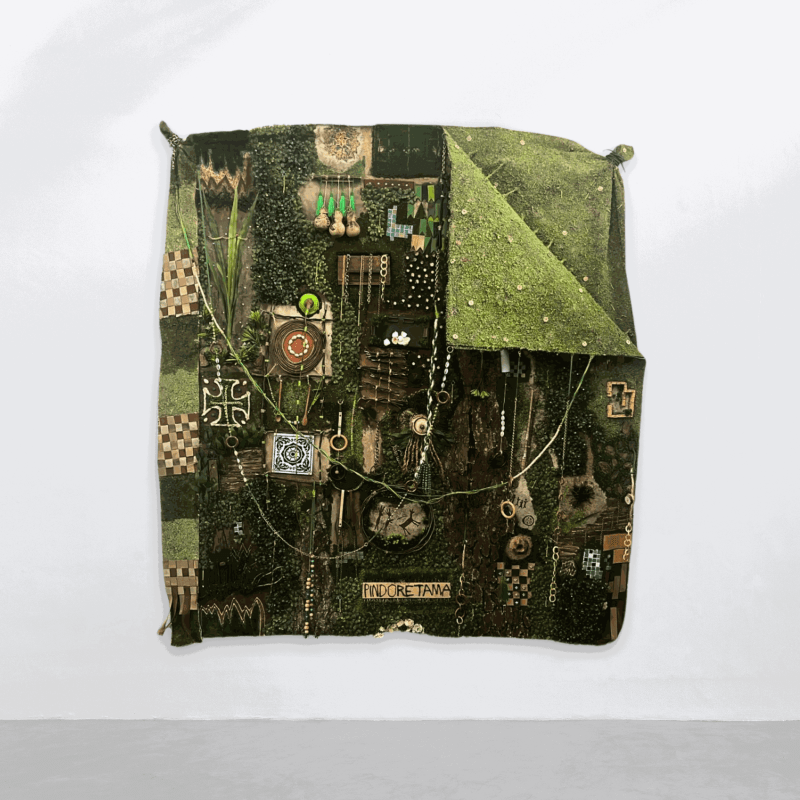Zipper Galeria presents Uma Contra-História do Brasil, a new solo exhibition by Camille Kachani. The series critically revisits the construction of what has conventionally been called the country’s “official history,” proposing an alternative reading from the margins—Indigenous peoples, enslaved Africans, and impoverished European migratory flows, whose experiences were largely silenced within official narratives.
Inspired by Michel Onfray’s method in formulating a “counter-history” of philosophy, Kachani shifts the focus of the canon toward those rendered invisible. “In these works, I try to retell, through allusions and symbols, the history of the country through the eyes of the peoples who, although they shaped or built Brazil, did not participate in the writing of Brazilian History,” the artist states. In his visual vocabulary, natural materials and cultural artifacts intertwine, reopening disputes over who names, maps, and narrates the territory.
The exhibition brings together 12 previously unseen works, including sculptures and mixed-media objects. In Pindoretama (2025), a title that evokes the Tupi name for the land, the artist transforms the “soil” into textile or banner, addressing a symbolic arena of contestation. Counter-History of Brazil (2024) draws parallels between the genetic diversity of its peoples and the natural world of a country marked by cycles of extraction. In Pau-Brasil (2024), a sculptural trunk condenses the ambivalence between commodity and origin myth, allowing Indigenous narratives to surface. Desmapa I and Desmapa II (2025) propose cartographies without recognizability, while Mundus Hodiernus I/II (2025) inverts world maps to suggest the global recurrence of conquest and erasure. Finally, Brazilapopolo (2025)—“the peoples of Brazil” in Esperanto—constructs, through a weave of plants and signs, the country’s mestizo constitution.
With sharp humor and formal precision, Kachani dismantles the presumed neutrality of objects. By making branches, roots, and inscriptions “sprout” from tools, books, and furniture, his sculptures stage frictions between nature and culture, tradition and modernity, erasure and remembrance. Rather than illustrating history, the ensemble reconfigures it through images—“a critical archaeology of the present,” in the artist’s own words.
About the artist
Camille Kachani (Beirut, Lebanon, 1963) is a Lebanese-Brazilian artist. He lives and works in São Paulo. His practice moves between sculpture, object, collage, and photography, investigating identity, belonging, and the transformations of nature/culture through everyday objects and organic materials.


